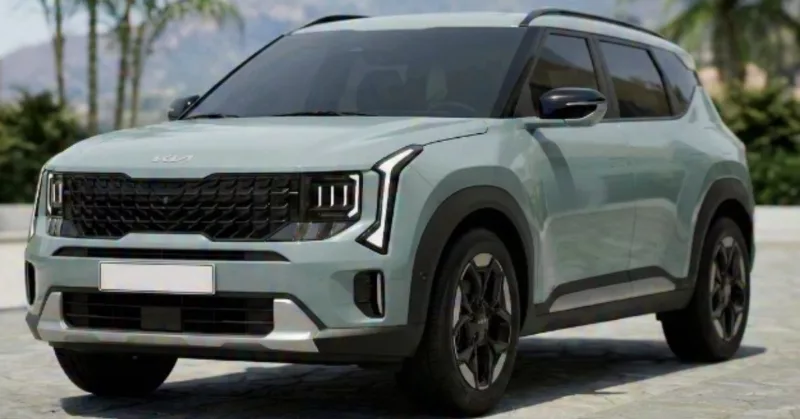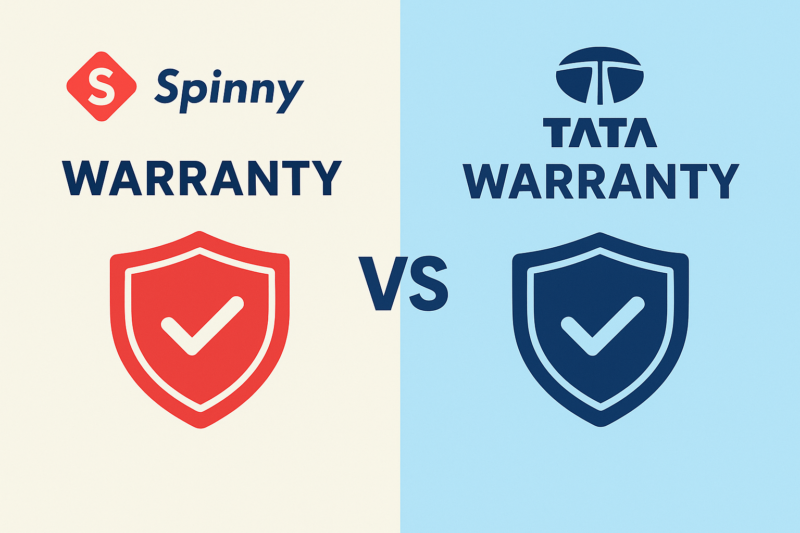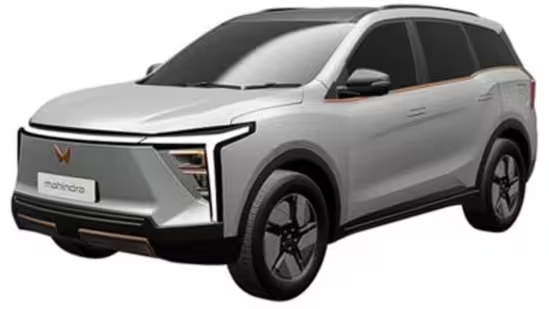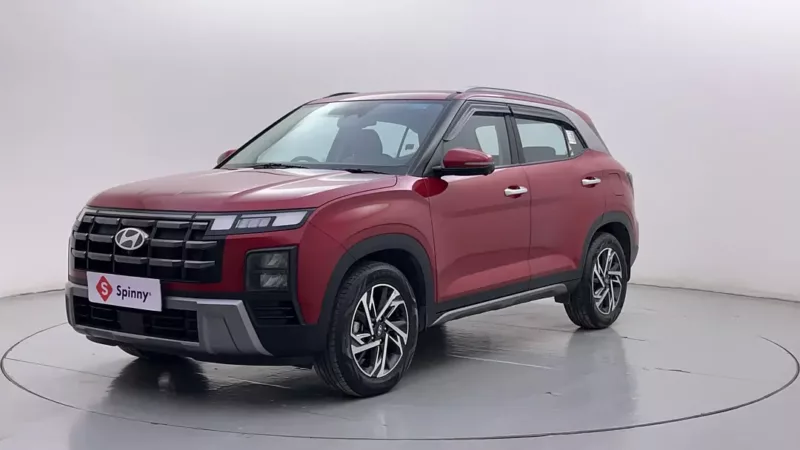The entry-level luxury SUV market in India is highly competitive, as it serves as the gateway for individuals transitioning into luxury vehicles. This market is led by brands such as the BMW X1 2025, Audi Q3 India, Mercedes-Benz GLA, and the unassuming Volvo XC40. These vehicles are able to deliver the typical luxury vehicle experience without the high premium that larger SUVs demand.
Due to that reality, such entry-level luxury SUVs are tremendously popular among Indian car enthusiasts. The Audi Q3 and the BMW X1 are highly-rated SUV models among them. And lo and behold, both these SUV models have just gotten new designs and new powertrains.
The 2025 variant of the BMW X1 is priced between Rs. 45.90 lakh and Rs. 50.90 lakh and is available with both petrol and diesel engines. This enjoyable-to-drive car is a hot favorite among car enthusiasts. One of the first cars to enter this category, having earned its reputation over time, is the Audi Q3. A very popular model and one of India’s best-selling luxury cars is the Q3. It’s also one of those few SUVs in this category that offers an AWD powertrain option and presents a strong case for itself. These two SUVs share many similarities, but there are still aspects that differentiate them. Let’s compare how the Audi Q3 and the BMW X1 compare on paper:
Check out the used luxury cars in India and buy the one that works the best for you.
BMW X1 vs Audi Q3: Dimensions
| Dimensions | BMW X1 2025 | Audi Q3 India |
| Length | 4500 mm | 4482 mm |
| Width | 1845 mm | 1849 mm |
| Height | 1642 mm (updated) | 1607 mm |
| Wheelbase | 2692 mm | 2680 mm |
| Ground Clearance | 183 mm | 170 mm |
| Boot Space | 476 litres | 530 litres |
Statistically, India’s Audi Q3 is also the wider SUV with a width of 1849mm compared to 1845mm of the BMW X1 2025. However, that’s a negligible difference and something that’s far from becoming a deal breaker. Be that as it may, on each and every parameter, BMW stands tall and takes home the crown. It’s also the tallest and longest SUV with a maximum wheelbase of 2692mm. The baby SUV from BMW has grown bigger and bolder with its new update, and it shows.
Another dimension on which there’s no contest and on which the BMW X1 2025 takes home the crown outright is ground clearance. However, on this particular front, Q3 takes a backseat and gives ground by offering maximum boot space of 530 litres, which is substantially ahead of its peers.
BMW X1 vs Audi Q3: Engine & Transmission
| Parameters | BMW X1 2025 | Audi Q3 India |
| Engine Options | 1.5-litre turbo petrol, 2.0-litre turbo diesel | 2.0-litre turbo petrol |
| Transmission Options | 7-speed DCT | 7-speed DCT |
| Power | 136 PS / 150 PS | 190 PS |
| Torque | 230 Nm / 360 Nm | 320 Nm |
| Mileage | 16.3 kmpl to 20.3 kmpl | 14.9 kmpl |
Things get tough between these SUVs once we compare the powertrain options on offer. The comparisons between these two newcomer luxury SUVs begin to appear once we compare their powertrain variants. The primary feature distinguishing these two SUVs is the inclusion of a diesel engine. The BMW X1 2025 features a 2.0-litre turbocharged diesel engine capable of 150 PS and 360 Nm of torque. The Audi Q3 does not come with a diesel engine, just like any other Audi vehicle in India. Audi has discontinued diesel models with the BS6 phase and has since confirmed that no type of diesel will be offered in India. This gives BMW an edge when compared, making it a single diesel variant favored by people seeking the same.
However, there is a very potent petrol engine on offer for the Audi Q3 India to compensate for this. The 2.0-litre TFSI petrol engine produces 190 PS and 320 Nm of torque, paired with a 7-speed DCT. The petrol-powered BMW also fails on this aspect, being powered by a 1.5-litre turbocharged petrol engine with 136 PS and 230 Nm of torque. It achieves good mileage at 16.3 kmpl, compared to 14.9 kmpl by Audi. Another notable aspect differentiating these SUVs is the AWD feature offered by Audi, but not by BMW. Overall, if you are on the lookout for a diesel luxury SUV, there is reason to get the BMW X1, but if you are on the lookout for a petrol luxury SUV, Audi takes the lead through a more promising combination of power.
BMW X1 vs Audi Q3: Features & Comfort
| Features | BMW X1 2025 | Audi Q3 India |
| Infotainment System | 10.7-inch touchscreen infotainment system | 10.1-inch touchscreen infotainment system |
| Music System | Yes | Yes |
| Climate Control | Yes | Yes |
| Ventilated Seats | Yes | No |
| Adjustable Steering | Yes | Yes |
| Drive Modes | Yes | Yes |
| Instrument Cluster | Digital | Digital |
| Sunroof | Panoramic | Panoramic |
| Adjustable Seats | Electric | Electric |
| Rear AC Vents | Yes | Yes |
| 60:40 Rear Split | Yes | Yes |
| Cruise Control | Yes | Yes |
As these are entry-level luxury SUV models, features are something that these two SUVs offer in no short measure. All that you’d expect from a modern luxury vehicle is offered here, and these SUVs even offer some extras. These two SUVs are perfectly matched here and also offer a 10-inch touchscreen interface. Some feature highlights for the Audi include a 12.3-inch virtual cockpit display, dual-zone climate control, powered front seats, and a panoramic sunroof. However, the Audi overlooks a very crucial feature, and that’s the ventilated seats.
The BMW offers some nice extras, such as a 10.25-inch digital driver’s display, 205 watts of power, a 6-speaker Hi-Fi system audio setup, and ventilated electric seats with memory.
BMW X1 vs Audi Q3: Safety Features
| Features | BMW X1 2025 | Audi Q3 India |
| NCAP Safety Rating | 5 Star (Euro NCAP) | 5 Star (Euro NCAP) |
| Airbags | 6 | 6 |
| ABS with EBD | Yes | Yes |
| ESC | Yes | Yes |
| Traction Control | Yes | Yes |
| Automatic Headlamp | Yes | Yes |
| Rain-sensing Wipers | Yes | Yes |
| Hill Hold Assist | Yes | Yes |
| Hill Descent Control | Yes | Yes |
| Rear Sensors | Yes | Yes |
| Rear Parking Camera | Yes | Yes |
| ISOFIX Child Anchors | Yes | Yes |
| ADAS | No | No |
Neither the BMW X1 2025 nor the Audi Q3 India offers any form of ADAS features, and are not equipped with many active safety features that are present on the Volvo XC40. However, otherwise, both of these luxury SUVs are equal in terms of safety, and both are awarded a 5-star Euro NCAP safety rating. The basics like 6 airbags, ABS, EBD, traction control, hill hold, descent assist, automatic headlamps, and rain-sensing wipers are present on both of these luxury SUV entry-level variants. However, Audi’s AWD setup provides better grip, making this luxury SUV safer, especially on rain-drenched roads.
BMW X1 vs Audi Q3: Price Comparison
| Variants | BMW X1 2025 | Audi Q3 India |
| Base Variants | Rs 45.90 lakh | Rs 44.89 lakh |
| Mid Variants | Rs 47.90 lakh | – |
| Upper Mid Variants | Rs 48.90 lakh | – |
| Top Variants | Rs 50.90 lakh | Rs 50.39 lakh |
The petrol variant of the BMW X1 costs Rs. 45.90 lakh and goes up to Rs. 50.90 lakh. The starting price for petrol variants for the Audi Q3 is Rs. 44.89 lakh for the base variant 40 TFSI Premium Plus and Rs. 50.39 lakh for its top variant 40 TFSI Technology. Of course, that’s just two variants and a single petrol engine for the Audi Q3, as we had mentioned earlier. However, both these variants are equipped with an AWD system.
It has three variants: sDrive18i xLine, sDrive18i Msport, and sDrive18d Msport. These two are petrol models, and the diesel model is 18d. Cost-wise, there’s no denying that the Audi Q3 is slightly less expensive than these two SUVs.
Conclusion
If you are looking for a diesel entry-level luxury SUV, there is no better vehicle than the 2025 BMW X1. It is an excellent vehicle and one of the most enjoyable to drive in this genre. It possesses every feature that you could ask for, and ranks extremely high on comfort and safety, and is therefore an even better deal. The pricing, too, is right, and the BMW does a very good job of justifying itself through its new styling, which lends it a silhouette closer to that of a larger SUV, with proportions to back it up.
If you desire an SUV driven by petrol, there’s no question that the Audi Q3 India excels with its robust 2.0-litre engine that has great grunt on its own and even better when mated with Audi’s renowned Quattro AWD. With Audi’s robust configuration and the AWD asking price versus the petrol model of the BMW X1 on paper, their prices are quite reasonable. Thus, the petrol model of the Audi Q3 gives excellent value for money, possesses the highest boot capacity, and solidifies its place among India’s finest luxury SUVs.
FAQs about BMW X1 vs Audi Q3
Q. Which SUV offers an all-wheel-drive system?
A. The new Q3 India for Audi features Quattro AWD on both models and thus gives it enhanced grip and stability. The 2025 BMW X1 remains front-wheel-drive only.
Q. Does the BMW X1 2025 still have a diesel engine option?
A. Yes. The X1 still offers a 2.0-litre turbo diesel engine that delivers 150 PS and 360 Nm torque and is still the only diesel variant currently among comparison entry-level luxury SUVs.
Q. Which model is more fuel efficient overall?
A. The BMW X1 diesel variant offers the highest claimed fuel economy (up to ~20.3 kmpl). In petrol, the BMW’s 1.5-litre engine is also more efficient (~16.3 kmpl) than the Audi’s 2.0-litre TFSI (~14.9 kmpl).
Q. Does either SUV offer ADAS features like lane keep assist or adaptive cruise control?
A. No. Neither the BMW X1 2025 nor the Audi Q3 India offers ADAS features in India, whereas some rivals, such as the Volvo XC40, provide more advanced driver assistance.
Q. Which SUV has more boot space?
A. The Audi Q3 India wins here with 530 litres of boot space, significantly more than the BMW X1’s 476 litres.




